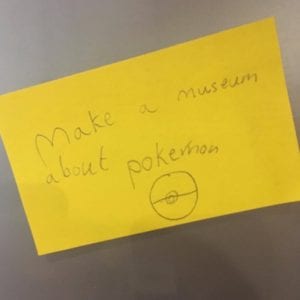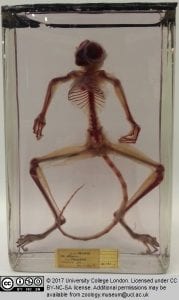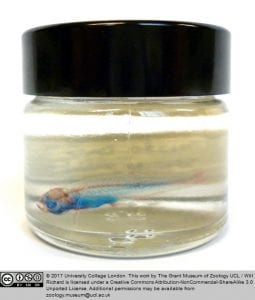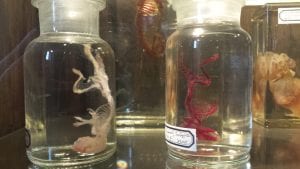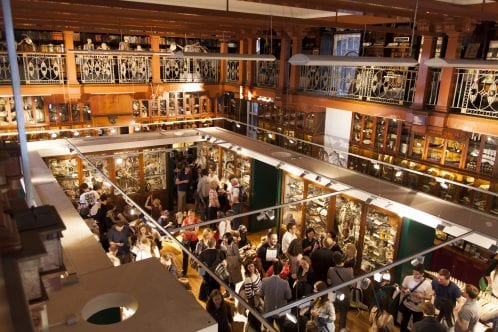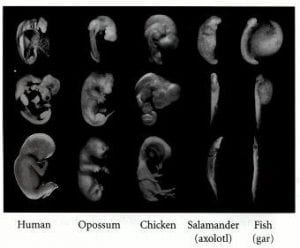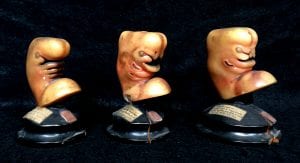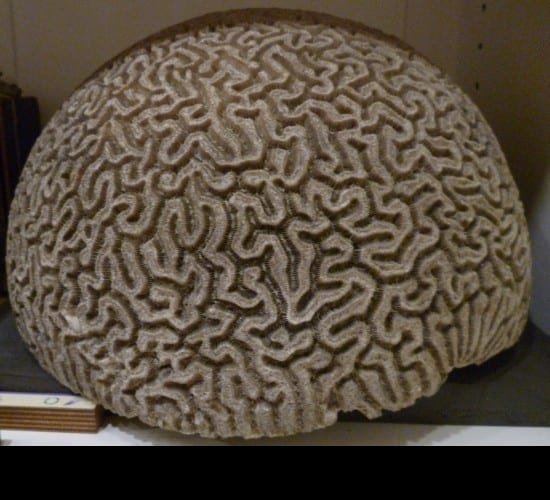Strange Creatures: The Art of Unknown Animals — Reflections: Part One
As the Grant Museum’s blockbuster exhibition, ‘Strange Creatures: The Art of Unknown Animals,’ draws to a close this Saturday, I reflect, in the first of two blogposts, on the provocations and implications of this thought-provoking, juxtapositional display of scientific and creative artefacts.
Glass, despite its transparency, is a singularly opaque and contradictory substance. Neither entirely liquid nor completely solid, glass, at super-heated temperatures can take on any form. However, at room temperature, despite its unyielding firmness, it is considered too chemically disordered to be considered a solid, as such. In technical terms, it is called, somewhat paradoxically, an ’amorphous solid’.
A further paradox: Glass is both naturally occurring and manufactured by humans. Midnight-black obsidian is created by the rapid cooling of silica, first made deliquescent by exposure to volcanic lava; the manufacture of human-made glass follows the same basic pattern. It is both geologically ancient and surprisingly modern; prehistoric humans utilised and greatly valued obsidian for its sharp edges, while, human-produced glass dates only as far back as the third millennium BC.
A consideration of the history of its use and manufacture in human society presents us with further contradictions. Used first for decorative purposes by Mesopotamians and in Ancient Egypt, in Ancient Rome, glass became a practical material, used for bottles, vessels, pitchers, cups, plates, goblets, and other household objects. Later on in the human story, glass would be a catalyst for scientific discovery and scholarship – glass lenses not only enabled ageing scholars to work past the onset of myopia, but acted as an enhancement to human vision. That illumination and enlightenment should be the dominant metaphor of scientific discovery as well as a central theme in Western religious discourse is no surprise then, given that glass is the material threshold that opens out onto both these worlds. The stained glass windows of European churches and cathedrals cast brilliant, coloured light upon biblical stories and the lives of saints as well as the people that stir within them, while glass lenses allow us to see far into the heavens and explore the microscopic mysteries of biological life.
Enter the Grant Museum of Zoology and Comparative Anatomy and one begins to see how the paradoxes of this material pervade biological science and, perhaps more significantly, the way in which we view it. Glass cabinets store a panoply of jars, in which colourless bags of flesh float silently in a nameless liquid, suspended in time. Transparent panes function as windows through which the spectacle of science can be viewed as well as the boundary by which it is ensured we remain spectators and not fumbling participants. The method of liquid preservation preferred by the nineteenth-century biologists and anatomists that used the collection in the Grant Museum is made possible by the unique properties of glass which allows them to store specimens in a sterile vessel as well as view the specimen contained within. This not only provides a double, tangible, scientific benefit – storage and visibility – but also makes possible the extravagant and morbid theatricality of the museum, something often considered antithetical to the staid objectivity of scientific truth.
By the entrance to the Grant Museum, adjacent to a collection of preserved brains, there sits a group of organisms encased in glass whose vitreous appearance seems distinctly unreal or unnatural. Attend to the object labels, and it becomes clear that, in fact, this unreality is no mere appearance, for these specimens are not merely sitting behind glass panes and stored in glass jars, but are themselves made from glass.

Synapta Maculata – Courtesy of Grant Museum
The objects in question are an otherworldly assembly of Blaschka models, replica versions of marine animals such as jellyfish, sea-slugs, and anemones. Their singularity as objects derives from the delicate, alien beauty of the animals of which they are simulacra, as much as it does from the material out of which they are made. The Blaschka family, renowned 19th-century Bohemian glass blowers, were in high demand for their ability to create apparently accurate models of marine invertebrates, the translucent, diaphanous flesh of which was difficult to preserve at the time. More striking still than the evocative, glassy fragility of these model animals is their seeming uncanny indistinguishability from the organisms of which they are merely representations.
The paradox of glass, then, is embodied in the very objects themselves which hover in the uncertain, amorphous zone between nature and art, by presenting themselves as the handicraft of evolutionary creation and and not the invention of and monuments to human artifice. For many visitors, it is difficult, if not impossible, to differentiate “real” specimens from these glass models without the aid of an object label or the keen observational skill of a zoologist. In another cabinet, a glass sea anemone, another Blaschka model, sits inconspicuously alongside a host of preserved anemones, jellyfish, and other invertebrates – very few people notice anything untoward or fake. It is only when visitors’ attention is drawn to the fact that they are, in fact, ‘false’ approximations of animals that these objects engender the awe they deserve. The moment their unreality or falseness is revealed is a sort of “lightbulb moment” for visitors, a drawing back of the veil to expose the secrets of their illusory nature. There is a titillation, as in the theatre or at a magic show, when we are confronted by our own suspension of disbelief, when that which presents itself as real reveals itself to be staged, drawing the spectator out of the comfortable – yet knowingly false – sense of belief that makes the spectacle itself possible.

Limax arborum – Courtesy of Grant Museum
And yet, for the multitude of museum-goers that fail to notice the object labels or who simply find the spectacle of these models sufficient for otherwise-detained powers of scrutiny, these simulacra are, in effect, real. In this sense, they work as well as genuine organic specimens, the function of which is simply to present itself to the eye of the viewer — to produce a spectacle of science. Should this state of affairs concern us? The supposedly objective truths of science recede into the shadows in view of the much brighter light of the artificial, man-made, and subjective truths of ‘art’ and the theatricality of the museum. What are the implications of this? And is the duty of the museum as such to make clear what is real and what is not?
Many specimens and objects in the Grant Museum pose similar questions: To what extent can deliberately posed taxidermic specimens offer us anything approaching an objective representation of an animal? Do plaster casts of ancient fossils adequately represent their real correlatives in other museums? Do models, originally made for teaching, belong in a museum that presents itself a museum of Zoology and Comparative Anatomy (and not a museum of the practice of these now historical, and in the case of the latter, defunct, disciplines)? And what, if anything, is the significance of these scientific models being made from glass, the very material that in microscopes lenses and slides, petri dishes, and storage jars, makes possible the practice and spectacle of contemporary biological science in the first place?
The philosophical, practical, and aesthetic puzzles the Blaschka models raise are a central component of the Grant Museum’s current – and hugely successful – exhibition, Strange Creatures: The Art of Unknown Animals. The exhibition is intended to explore the history and practice of representing previously unknown or exotic animals and the implications this practice has for art, science, museums, and the practice of representation as such. A number of Blaschka models are included in the exhibition, as are a number of fascinating work from UCL’s other collections.
16thC Animals: Allegory, Art, and Authenticity
The influence of the 16th-century German artist, Albrecht Dürer, looms large in this exhibition. Two works in this exhibition, both from the 16th century are derived or copied from his work. One, an engraving by an anonymous artist based on Dürer’s St Jerome in his Study includes an anatomically errant lion. The second, an engraving of a rhinoceros, based on a hugely influential woodcut by Dürer of the same animal from 1515, shows this animal to be heavily armoured, covered in scales, and in possession of an additional horn at the top of its spine. Dürer’s original work was not based on any real life encounter with the animal, but on an account and a sketch produced by those who witnessed an Indian rhinoceros at the Lisbon court of King Manuel I.

Dürer’s Rhinoceros – 1515
Such was its influence on 16th century image-making that it produced an entire genre of rhinoceros representations and it is in this genre that the engraving in the Grant Museum exists. It would not be until the 18th century that Durer’s rhinoceros would be replaced by more anatomically accurate versions, supplanting the cultural dominance of the partially mythical armoured version that dominated the European imaginary. However, this particular representation and its progeny continued to occupy an exalted place in the West’s vision of the East and its exotic animals, apparently appearing in textbooks until the 1930s.
It is the former Durer-derived work, however, the engraving of St Jerome working in his study, that arguably offers the visitor a more engaging opportunity to meditate on the relation between art and nature. If Durer’s rhinoceros embodies the way in which artistic and scientific representations of animals – accurate or not – can exert an influence for hundreds of years on the scientific and cultural imagination, the copied reverse engraving of St Jerome in his Study dramatises a complex interaction between the representation of the natural world, allegory, and the European and Christian mythos.

St Jerome in his Study – 1514
The accuracy or provenance of the representation of the lion represented in this work, which appears strangely misshapen to the contemporary eye, is subordinate in this work to the numerous objects of allegorical import that surround Jerome as he bends dutifully over his bible. A cross sitting on his desk, an image of sacrifice and resurrection, is located at the midpoint between Jerome’s lowered head and a skull, a memento mori, which, sitting in the windowsill, is a reminder of finiteness of life (“remember [that you have] to die”). There is an uncanny resonance here between the deliberate allegory of this skull and the actual crania that inhabit almost every corner of the museum. In this light, the Grant Museum takes on the feeling of an overwhelming, repetitive chronicle of death and a chilling reminder of our own mortality, even as we walk amidst this multitude of animals and consider the abundant and varied nature of life. Elsewhere in this engraving, an hourglass symbolises the inexorable passage of time and a gourd hanging from the ceiling recalls a now obscure scholarly debate between Jerome and St Augustine over the translation of the Greek term kikayon (Augustine interprets this as ‘gourd’ whereas Jerome translates it as ‘ivy’), the reference to which is assumed to reflect Jerome’s dedicated, scholarly character.
The lion is itself suffused with allegorical significance. Jerome is said to have pulled a thorn from the lion’s paw and, in doing so, taming it and in this work it lies peacefully and obediently by his desk, as does a dog – itself a symbol of loyalty. Thus, while the rhinoceros offers us an exemplar of the way in which inaccurate representation can come to construct (cultural) reality, St Jerome shows us how scientific accuracy in an artwork can be less important than its allegorical, symbolic, or referential significance. It becomes difficult not to view the skeletons of lions and dogs, as well as the multitude of animal memento mori in the Grant Museum, less as objects of science, but as frames over which we drape allegorical and unconscious meaning.
Michel Foucault, in an essay on authorship and authenticity, reminds us that it is with St Jerome that the scholarly practice of seeking the authorial provenance of a text originates. Jerome, we are told, pioneered certain techniques for confirming the authenticity of a work by identifying certain traits within it that could tie to a particular author. Such desire for confirmation and authenticity is made difficult in these engravings, not only because they are themselves copies of older works, but because their ostensibly inaccurate representations of animals exert such an influence on our culture that their scientific “authenticity” is no longer relevant. The importance of St Jerome’s task in seeking out authorial authenticity was to confirm the value of the text and to affirm its “truth”. To dismiss the value and truth of Dürer’s Rhinoceros or St Jerome because of an assumed inauthenticity and inaccuracy is to miss entirely the point of this exhibition: art, science, indeed representation, incorrect or otherwise, participate in the authorship of our reality.
Cuddly Toys, Plastic Dinosaurs, and Commercial Interests
The exhibition, however, is not entirely taken up with implicit invitations to consider human mortality or meditate on the origin of Western exegetical practice. In another part of the museum, a teddy bear looks out from one case, a representation of a recently discovered mammal called the Olinguito. Here, we are invited to consider the way in which media representations and marketing ploys can distort the import of scientific knowledge. To be sure, the discovery of the Olinguito was hugely significant, the first new mammal to be found in many years. And yet, is its discovery more important than any other advances in biology? The exhibition shows how the Olinguito discovery was reported widely upon in major newspapers, to the benefit of news outlets in search of copy and marketable stories, but perhaps to the detriment of the representation of the complexity and heterogeneity of scientific and biological research.
Toys, the seemingly innocent playthings of children, feature in another corner of the museum. Here, multiform plastic dinosaurs rendered in primary colours remind us of the pervasiveness of inaccurate representations of animals and their effect on our implicit understanding of them. Opposite this little testament to the indifference of toy-makers and cartoonists to scientific accuracy, a small screen displays an explanation of the latest research into the anatomy of the dinosaur which is arguably the most frequent victim of distortion, inaccuracy, and consequent mythologisation: the Tyrannosaurus Rex. We have, it seems, been representing — and, indeed, imagining — this mythological figure all wrong. According to new research, we are to understand that this animal was in fact more svelte than we previously imagined, and this fact is rendered in suggestive 3-D imaging on the screen before us. The gap between this hi-tech scientific rendering and the less-than-scientific children’s toys is clear: it suggests to us that humans, whether artists, toy designers, film-makers, and cartoonists are not to be trusted with representing the strange or exotic — for they will reliably get it wrong. And more insidiously, this inaccuracy occurs sometimes in the service of commercial interest.
The juxtaposition of the this newly rendered 3D dinosaur model – the red cables of its musculature stretching, contracting, and expanding as its legs propel it forward – with Dürer’s rhino tells us something different, however. And it is a chastening point because for all our contemporary confidence that this digital rendering of T-Rex is accurate, it is clear that a similar feeling possessed those who felt themselves to be improving on Dürer’s rhinoceros.
We may never improve on this model, or we may find evidence that will refute its accuracy or simply modify it. However, such is the peril of representing the unknown, of re-creating something that is, in real terms, entirely inaccessible to human perception, that it is – from a philosophical point of view, if not a scientific one – a doomed project.
Next Week: More Reflections
In the next part of this blog, I will reflect further on the perils of representation in science and art, and finally arrive at what is the centrepiece to this exhibition: Stubbs’ Kangaroo or The Kangaroo from New Holland (1772). This painting is hugely historically significant, not only for the stories it tells about Captain Cook, the practice of painting newly discovered animals, and the history of biology, but also because of what it does not say about Australia’s indigenous culture and the contrasting traditions of representation that existed thousands of years prior to the arrival of Europeans.
Strange Creatures: The Art of Unknown Animals runs until the 26 of June
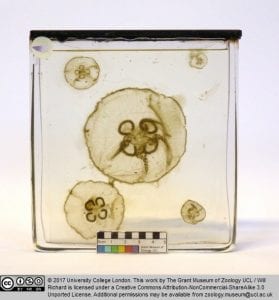

 Close
Close


